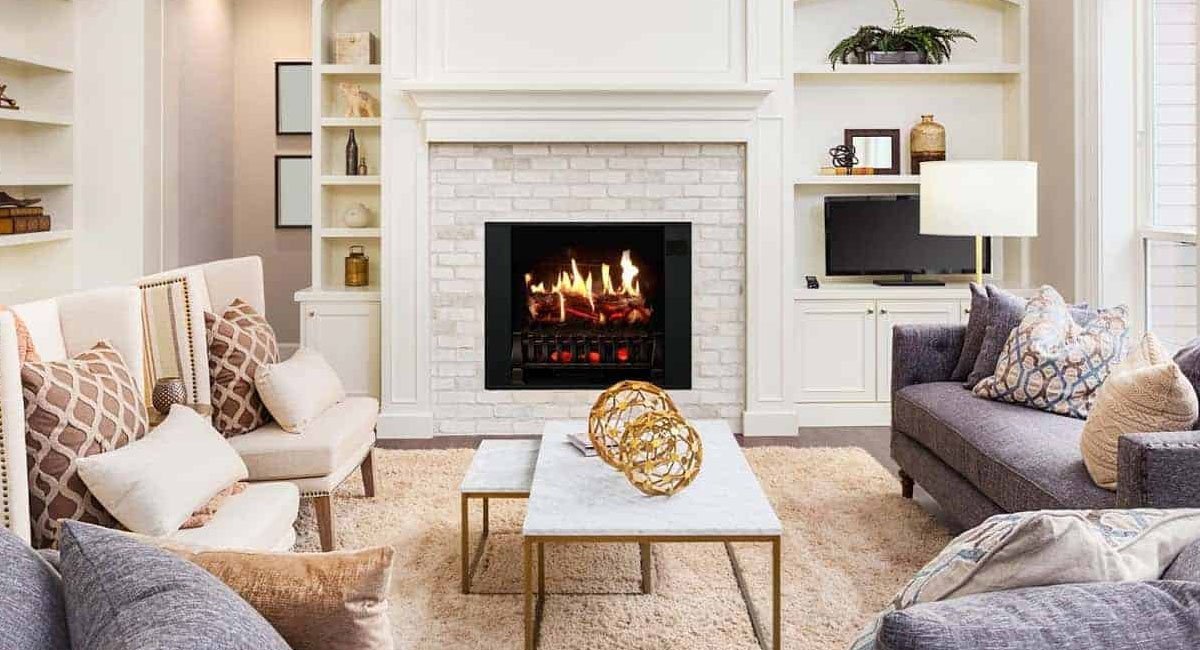Whether you use traditional or electric fireplaces, these features are great additions to a home. From Christmas carols to love scenes, a fireplace has always had a traditional place in both American culture, and in American home design. A great number of people wouldn’t really consider their home to be complete without a fireplace it’s become that much of a staple of home design. As it rightly should, since a fireplace is much more than just a simple design trick. Not only does it heat up a room, a valuable commodity in places with cold climates, but a fireplace can create a warm, comforting atmosphere in any room where it’s being used.
However, for all their good looks and warmth, fireplaces can also be a great pain of a chore. Take a wood burning fireplace, just for an example. First of all, many homes which have wood burning fireplaces are either in the city, or the suburbs. That means that wood has to be purchased, or transported a long way to their home. Even for those closer to the source of their wood however need to cut, stack, and haul said fuel. And once all the cutting, hauling, and stacking is done, a fire must actually be built inside a wood burning fireplace. It sounds simple, but there is often a bit of art in building a fire with nothing more than wood. And of course, there’s the fact that once the fire is out there is the soot and ash to clean up. All in all, a wood burning fireplace can be quite the chore.
Unfortunately one doesn’t get out of the tiresome chore of clean up just by switching from a wood burning fireplace to a gas burning one. Starting a fire in a gas burning fireplace is a great deal easier than starting it in a wood burning fireplace, but there is still the issue of bringing in wood, and of cleaning up once the fire is out. In addition, a gas burning fireplace will add on a considerable amount to your natural gas bill, particularly if it is used often during the cold winter months. In addition, both of these kinds of fireplaces have the added drawback that you can’t really leave the room until the fire is out for fear that a spark or ember might fall out and burn down your home. Quite a lot of drawbacks just for the simple comforts of a warm fire to light up your living room.
One popular alternative to the more traditional fireplaces that’s been seen a great deal in the past few years are electric fireplaces. The flames that electrical fireplaces simulate are very authentic looking, though they aren’t in and of themselves actual flame. However, to stand in front of an electric fireplace, the illusion of the fire is made nearly complete by the heat that it produces. In addition, the mantles and facades that come with any electric fireplace are often very classy, and can add something to any room that they’re installed in.
Electric fireplaces, by and large, are a great deal more efficient than either of the other two types of fireplaces mentioned above. To put it in perspective, an electric fireplace uses roughly the same amount of energy as a space heater, and cost roughly 1/3 as much as running a gas powered fireplace. And on top of the cost differential, an electric fireplace has no emissions, and loses no energy up the fireplace chimney, which is one of the larger problems with pure wood burning fireplaces. In addition to saving money, and the effort of reducing the various chores associated with more traditional fireplaces more than makes an electric fireplace worth the cost.
An electric fireplace is easy to install, safe, and portable. They heat up quickly, shut down just as fast, and there’s no waiting for the fire to go out… just turn it off when you’re done for the evening. In addition, an electric fireplace can be installed in any home, or even an apartment, where a fireplace wouldn’t normally be. But best of all is that electric fireplaces are very environmentally friendly. When wood is burned, the stored carbon inside of it is released into the atmosphere, which results in a build up of more green house gases. Trees are storehouses for those gases, holding them inside and using them to build their trunks. When burned, those gases are released back into the atmosphere. Since an electric fireplace doesn’t use wood, it is not only more efficient, and fairly cheap in the long run, but is convenient, and environmentally friendly.
